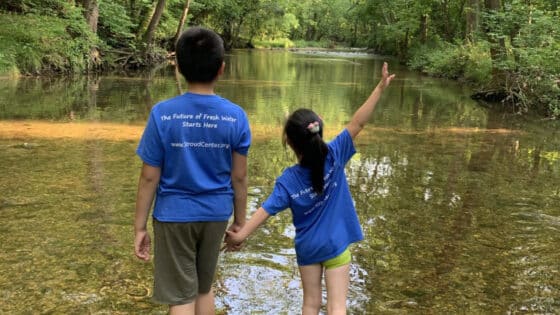Ensign, S.H., D.M. Leech, and M.F. Piehler. 2014. Ecosphere 5(7):1–25.
Abstract
Phytoplankton biomass is commonly used as a water quality metric in the management of anthropogenic nitrogen and phosphorus loading, yet interpretation of the long‐term response of phytoplankton biomass to nutrient regulation may be confounded by changes in zooplankton grazing pressure. Zooplankton community structure may be affected by planktivorous fish whose populations are subject to losses through fishing and gains through restoration efforts. We investigated temporal changes in phytoplankton biomass, nitrogen and phosphorus concentrations, zooplankton, and planktivorous fish in the tidal fresh and oligohaline Chowan River, NC, over a 30‐year period in order to compare long‐term trends in these parameters and infer their relative influence on phytoplankton biomass. Data were compiled from the records of two state agencies and several academic studies and supplemented by our own two year monitoring of water quality and zooplankton in the Chowan River mainstem and two tributaries. Seasonal trend decomposition using locally weighted regression was applied to chlorophyll a (a proxy for phytoplankton biomass), nitrogen, and phosphorus, and showed that chlorophyll a declined more quickly than did nutrient concentrations over the 30‐year period. Despite the long‐term decline in nitrogen and to a lesser extent phosphorus, the long‐term trend in phytoplankton growth rate (predicted using an empirical model involving irradiance and nutrients) remained relatively constant. Zooplankton abundance increased from the period 1981–1982 to 2008–2010, as did the predicted zooplankton community water clearance rate (a proxy for zooplankton grazing). River herring, historically the dominant planktivore, declined dramatically over the 30‐year period. The data indicate that the most parsimonious explanation for the long term decrease in chlorophyll a is an increase in zooplankton and not a decrease in nutrients. This inference leads us to hypothesize that the historically large river herring population exerted a positive, indirect influence on phytoplankton biomass in the Chowan River system, and that the decline in river herring has lead to higher zooplankton abundance and subsequently lower phytoplankton biomass.


